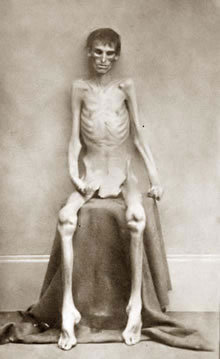While Hovagimyan’s article examines several types of
multimedia, the most interesting his segment on photography. He highlights how
one of the main efforts when taking a photograph is to express a feeling that
has been frozen in time. This is accomplished through various lighting and
filters, or through the cultural impact of a specific photo.
The most intriguing part of this is how single moments in
time often shorter than a second can have an immense social impact. Such is the
trend with Mathew Brady’s war documentary photographs. Shown below is a photograph he took of a prisoner of war. The picture itself is shocking, not only because of the state of the subject, but because at first you don't know what you are looking at--it could be a person or a skeleton etc. More important than the pictures themselves, are the cultural impact Brady's photos had. As the article states, the pictures didn't stop people from going to war, merely they stopped people from glamorizing war in visual media. Again the amazing part of this is that such a tiny segment of time can have such a widespread impact.
A separate expample that comes to mind is the photograph of the Afghan girl by Steve McCurry. This is one of the most recognized photographs ever, and became a symbol of the late 1980's. The photo itself is striking, mainly because of the girl's piercing stare. Again though, the photo is important because it brought awareness to the middle east, not just because it beautiful.


No comments:
Post a Comment